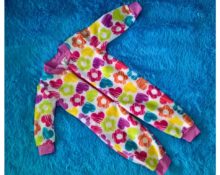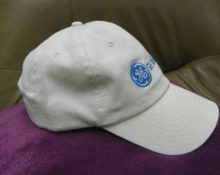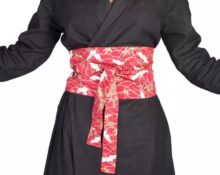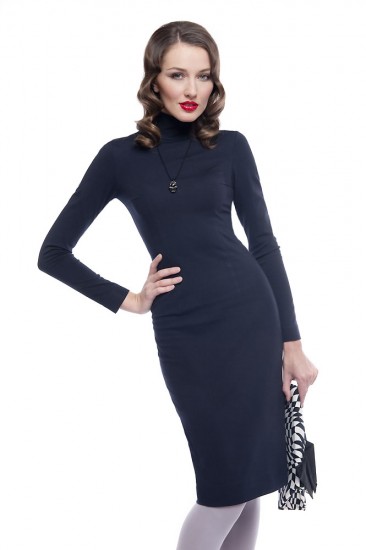 In the season when warm days give way to cool weather, it’s time to sew yourself a cozy and feminine dress. A turtleneck dress is very suitable for the autumn wardrobe of a modern city woman. It is very easy to create a pattern for it and sewing can be done in a few hours.
In the season when warm days give way to cool weather, it’s time to sew yourself a cozy and feminine dress. A turtleneck dress is very suitable for the autumn wardrobe of a modern city woman. It is very easy to create a pattern for it and sewing can be done in a few hours.
Turtleneck dress: how to make a pattern and sew it yourself
The main characteristic of knitted fabric for sewing is stretchability. The easier the knitwear stretches, the smaller the increase is included in the pattern.
For such a product you do not have to create a complex pattern. Darts and complex reliefs, which will only decorate any dress made of non-stretchable fabric, are not suitable for knitwear.
Reference! The exception is female figures with large breasts: for them, a small chest dart is retained.
The pattern for a knitted dress may seem very simple. It’s not a shame to spend time working on it. One basic knitted base is suitable for several types of women's clothing:
- A turtleneck can be sewn using this pattern if it differs from a similar dress only in length;
- various knitted blouses;
- By shortening the sleeve and slightly changing the neckline, you can use the pattern for a T-shirt.
It makes sense to replenish your collection of your favorite patterns with a proven basis for knitted items.
DIY turtleneck dress made of jersey
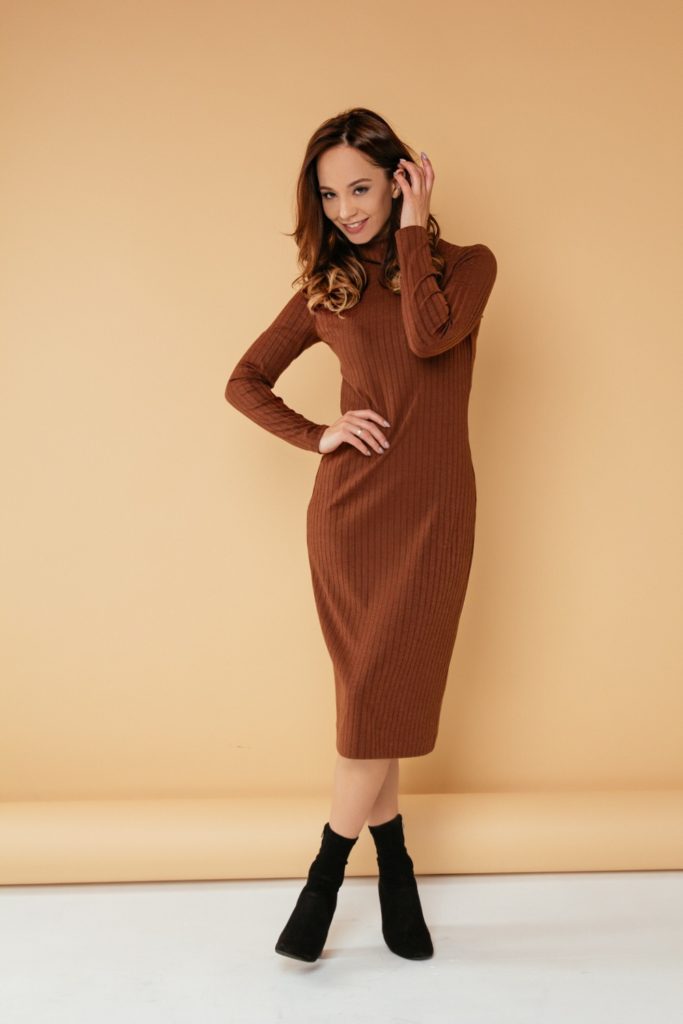
One of the most rewarding models: with a minimum of investment and effort, it’s easy to get the hit of the season.
Materials and tools
The main material for sewing this product is knitwear. Knitted fabric varies in density, knitting pattern and fiber composition.
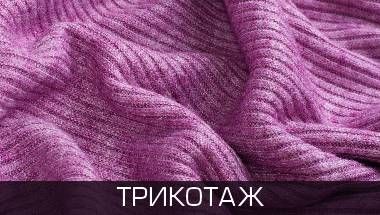
It is recommended to choose dense, well-stretchable knitwear with an elongation of 40–50%.
At garment factories, a separate line of special machines is installed for sewing knitted items. At home, you can get by with familiar equipment. It is enough to loosen the tension of the threads in the sewing machine, and thread both needles in the overlocker, setting it to the four-thread stitch mode.
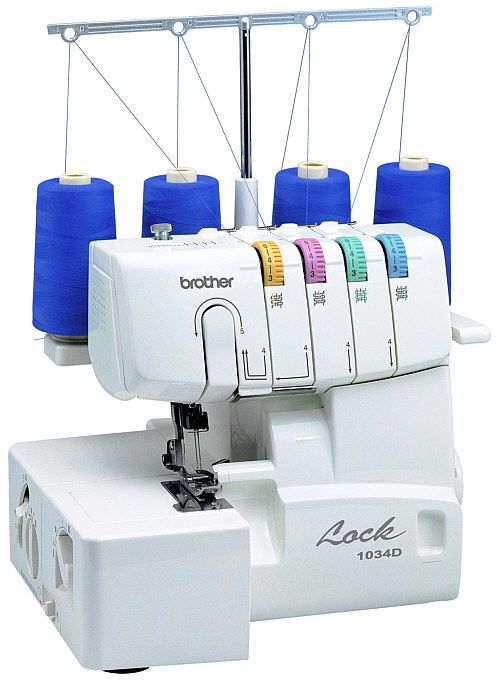 There will be no problems with sewing when you have a good, preferably four-thread, overlocker in the house. If there is no such special machine, you can sew the seams with a knitted stitch (available on any modern machine), and perform the overlocking on a three-thread overlocker. If there is no overlocker at all, as well as the knitted stitch itself, you can process the seams with a zigzag stitch using a small stitch on a regular sewing machine.
There will be no problems with sewing when you have a good, preferably four-thread, overlocker in the house. If there is no such special machine, you can sew the seams with a knitted stitch (available on any modern machine), and perform the overlocking on a three-thread overlocker. If there is no overlocker at all, as well as the knitted stitch itself, you can process the seams with a zigzag stitch using a small stitch on a regular sewing machine.
Some types of knitted fabric can be damaged by a regular needle; for them, you need to change the needle to a special needle for knitwear with a rounded tip. It moves the threads apart without damaging them.
Pattern
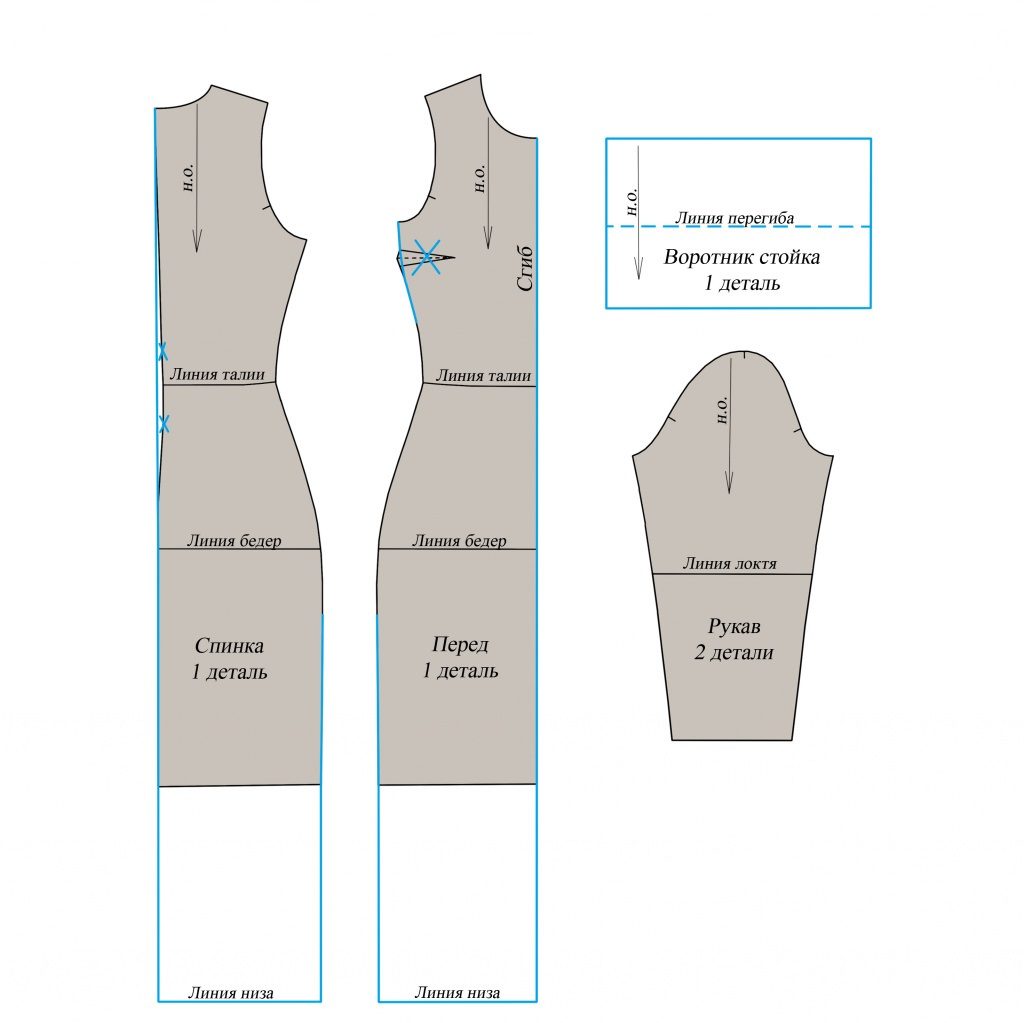
There are several ways to create a pattern for a knitted turtleneck dress:
- You can build a pattern using a simple algorithm, with a minimum number of necessary measurements.
- The method is to obtain a knitted pattern from a base for non-stretchable materials by modeling. This method will require some experience in pattern making.
- The simplest way, but suitable for such a simple thing, is to trace the details of your favorite knitted dress or knitted sweater, and build the sleeve and collar yourself:
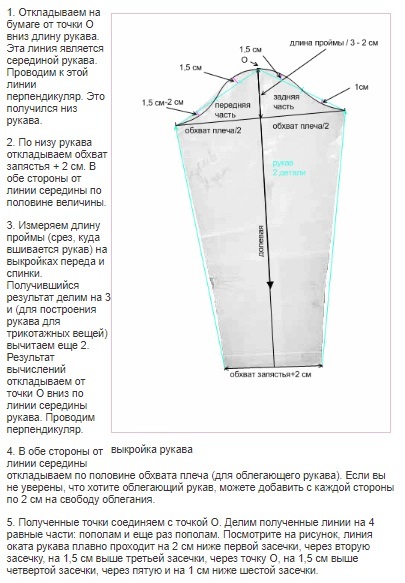
To create a golf collar pattern, you need to draw a rectangle, where the length is the length of the neck, the width is twice the desired collar height.
Uncover
Often, the knitted fabric has “arrows” on one side. When cutting, the parts should be positioned so that the neck and sleeve cap are on the unraveling side. If you unfold the material, on the contrary, the lowered loops will “decorate” the bottom of the product. And the neckline and collar are sewn so securely that dropped loops are not a problem here.
Cutting a knitted fabric is otherwise the same as cutting fabric.
Advice! To ensure that the tensile material does not move when cutting, patterns can be pinned with both layers of material.
Sewing steps
Sewing is very simple, it fits into a short list of steps.
For the basic steps of sewing a dress, an overlocker and a household sewing machine are enough:
- We sew the cut back and front using an overlocker along the shoulder and side seams.
- Sew the inner seam on the sleeves and collar.
- The collar is sewn into the neckline, and the sleeves into the armholes.
- We install a double needle on the sewing machine and sew the bottom of the dress and sleeves.
Reference! You can use pins to fasten knitwear; the main thing is not to forget to remove them before the overlocker and machine foot.
The last stage, but also important, is ironing the finished dress:
- We use steam and a terry towel backing so that no iron marks remain on the knitwear.
- After ironing with steam, the dress should cool well when unfolded.
A ready-made turtleneck dress will serve as a basic item in your wardrobe; it goes well with different tops and shoes. After the first one, you will probably want to sew a couple more.


 0
0